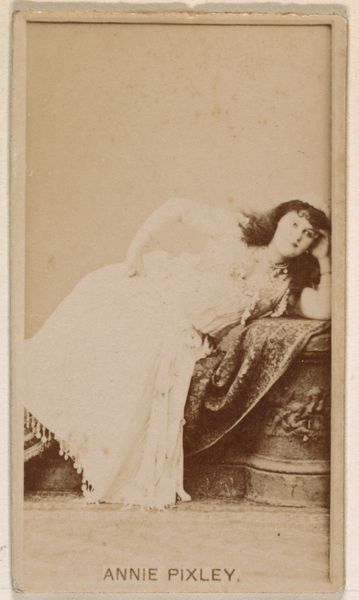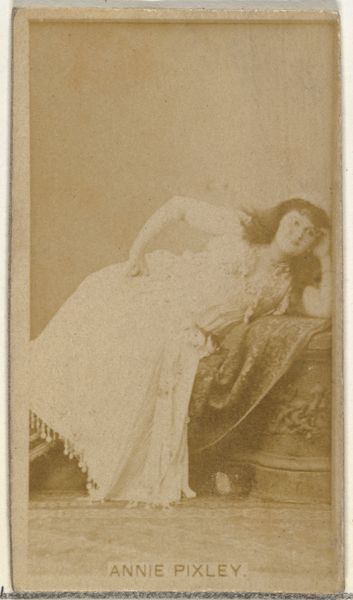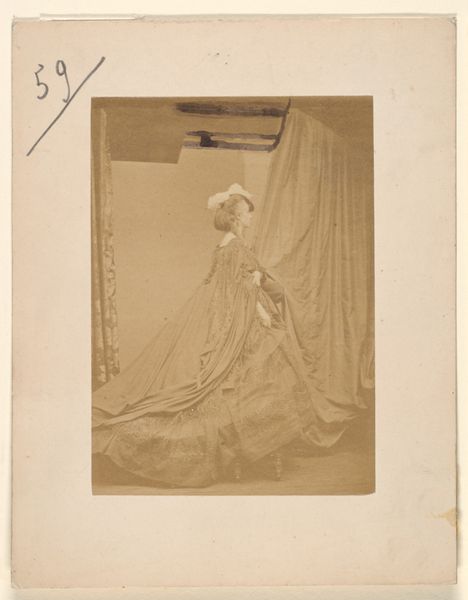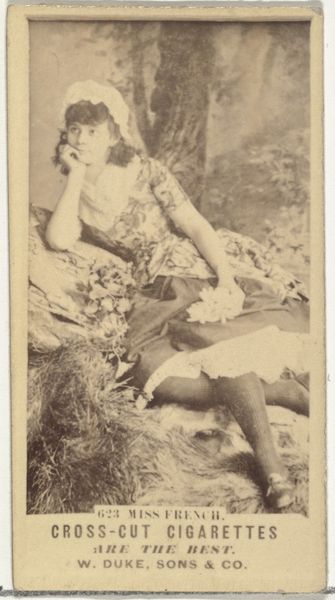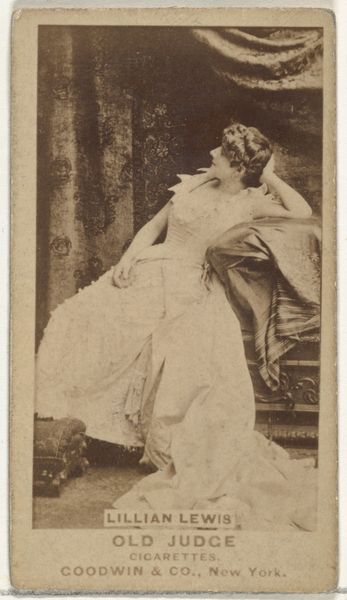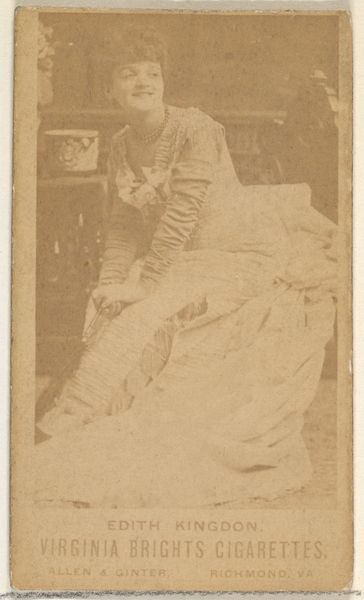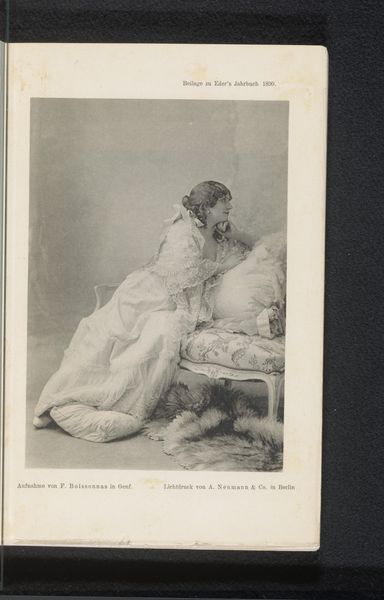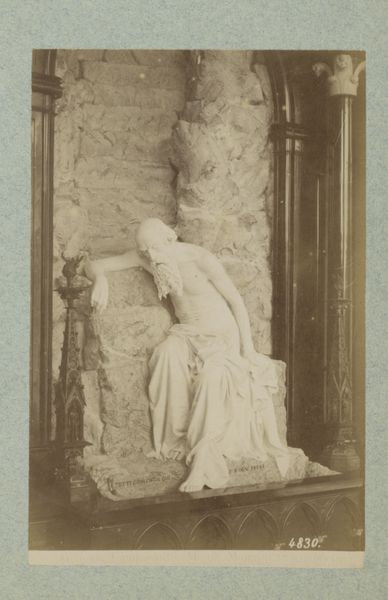
Copyright: Public Domain
Curator: Let's discuss Pierre-Louis Pierson's "Repos (autre)," an albumen print dating back to the 1860s, currently held in the collection of the Metropolitan Museum of Art. Editor: It's…suffocating. The composition feels overly staged, almost claustrophobic, with so many frills and textures. The light is diffuse and lacks real contrast, making everything blend together. Curator: Indeed. Pierson was deeply involved in the court of Napoleon III, often collaborating with the Countess de Castiglione. Her patronage offered Pierson access to resources—rare chemicals, the latest lenses—pushing photographic technologies but, conversely, perhaps restricting subject matter. This "repose" feels anything but. What's visible of her gown is extravagant, even by court standards. Think of the labor needed to create this garment alone, never mind the backdrop and set design. Editor: It seems like the textures and the overall effect are far more about displaying wealth than capturing any true essence of the subject, wouldn’t you agree? This reminds me of academic painting conventions more than pushing boundaries, aesthetically speaking, although you suggest materially something very different was being explored. The tonality, the soft focus, and composition feel conventional for the Romantic portrait style. Curator: Quite. And this particular image being an albumen print, places it firmly within the aesthetic sensibilities of the time. But by framing this not as an end product, but as part of the production and performance of aristocratic excess and class divisions lets us start to pull it apart. The materials used and the photographic process itself contributed to, and reinforced, this message, this self-construction, and ultimately this carefully fabricated image of imperial identity and material worth. Editor: It all points to how constructed our visual perceptions truly are, through composition, yes, but equally via this matrix of industrial and social forces at play during the second empire. Fascinating! Curator: Absolutely. Studying Pierson helps unpack an important moment in understanding image making and consumer society—how photographic portraits not only reflected, but created identities, within precise social and material conditions.
Comments
No comments
Be the first to comment and join the conversation on the ultimate creative platform.

